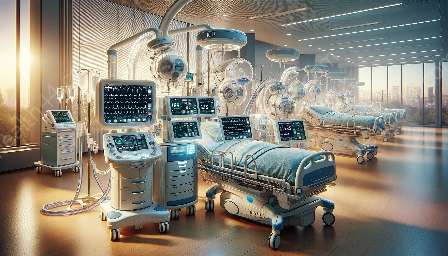Artificial hearts, a groundbreaking innovation in medical technology, have played a pivotal role in transforming life support systems and medical devices. This topic cluster delves into the fascinating world of artificial hearts, exploring their development, functionality, integration into life support systems, and their impact on medical devices and equipment.
The Evolution of Artificial Hearts
Historically, the quest for artificial hearts dates back to the mid-20th century, with notable milestones marking the progression of this life-saving technology. Dr. Paul Winchell's renowned invention of the first artificial heart in 1963 set the stage for further advancements in the field. Over the years, pioneering researchers and innovators have continually refined and enhanced artificial heart technology, leading to modern marvels that have revolutionized healthcare.
Functionality and Design
Artificial hearts are intricate devices designed to mimic the actions of the natural human heart. These cutting-edge devices utilize advanced materials and engineering to replicate the pumping mechanism and circulation of blood within the body. With the ability to sustain life by effectively replacing a failing natural heart, artificial hearts have become an indispensable component of life support systems.
Impact on Life Support Systems
The integration of artificial hearts into life support systems has significantly expanded the scope of medical care for patients with critical cardiac conditions. These remarkable devices provide a viable solution for individuals awaiting heart transplants or those suffering from severe heart failure. By serving as a bridge to transplantation or as a long-term therapy, artificial hearts have transformed the landscape of life support systems, offering hope and extended survival to numerous patients.
Intersection with Medical Devices and Equipment
Artificial hearts have greatly influenced the development and utilization of medical devices and equipment. The intricate nature of these devices has driven innovations in the fields of biomedical engineering, materials science, and medical device manufacturing. Moreover, the incorporation of artificial hearts into medical practice has necessitated the advancement of monitoring and support technologies to ensure the optimal functioning of these life-saving devices.
Challenges and Future Prospects
While artificial hearts have made remarkable strides in healthcare, challenges remain in terms of cost, accessibility, and long-term reliability. However, ongoing research and development efforts are focused on addressing these challenges and further enhancing the efficacy of artificial hearts. The future holds promise for continued advancements in artificial heart technology, paving the way for improved patient outcomes and enhanced life support systems.
Conclusion
Artificial hearts stand as a testament to human ingenuity and the relentless pursuit of pioneering medical solutions. As these remarkable devices continue to evolve, their impact on life support systems and medical devices is poised to expand, ushering in a new era of cardiovascular care and innovation.


